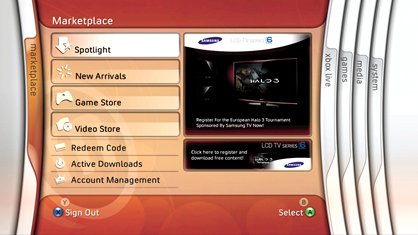Why Xbox Live isn't free
We take a closer look at Live and ask: what is it we're paying for?
The Developers
So long as the expense of running servers and matchmaking systems has to be picked up by somebody, no online gaming service will ever be truly ‘free’. The cost of PSN and PC online gaming is typically picked up by developers and publishers. CoD4, for example, runs on similar systems on both console platforms, but is maintained by Microsoft on Live and by a dedicated third party company at Activision’s expense on PSN. Both play the same at your end and both work on a peer-to-peer system with a matchmaking layer to link players up, but on Live you pay for that layer, and on PSN they pay.

Live is a great deal for third parties then, but less so for gamers. On the plus side, it means Microsoft get the lion’s share of online-enabled games, with even the most low-rent of independent developers able to support online matchmaking in their games. Meaning, overall, it makes online play in multi-format titles far more likely on the 360.
But again, is it really $49.99/£39.99’s worth of bonus? The PC/PSN model - where publishers/developers run their own matchmaking systems - has worked for years and PC gamers have enjoyed cost-free gaming even before the days of multiplayer Doom. Sega’s Dreamcast was arguably the first console to make a dent in the online space and managed to offer online play in the majority of its titles at no cost. PlayStation is set to offer users everything Live does at no cost in the near future, Steam offers everything Live does in its supported games, and the Wii... well, at least it’s free, eh?
THE TRUTH
Live’s best asset is that it allows even small developers to support online play - the value of which can’t possibly be denied. Without it, we’d never see online play in small-budget XBLA titles or even marginalised full-price games. The question to ask is whether or not that’s worth the precious money from your pocket, on rotation, every 12 months.
From the player’s end experience, Live is the leader, but it’s hardly a full fifty bucks/forty-quid ahead of its competition. The market has changed since 2002 and so long as the PlayStation Network and Steam Community threaten to match Live feature-for-feature, Live needs to be obviously better in some other way, especially in the UK where it costs a full fifteen quid more for a yearly subscription than the $50 (£25) cost over in the U.S.
Sign up to the GamesRadar+ Newsletter
Weekly digests, tales from the communities you love, and more
At some point in the coming months, PSN will rob Live’s Friends List, completing its mimicry of Microsoft’s system. It’s at that point where questions must start to be asked of Live. It’s certainly easier for developers, but as gamers, perhaps we should rightly expect just a little more from our Gold subscription.
Jun 17, 2008


